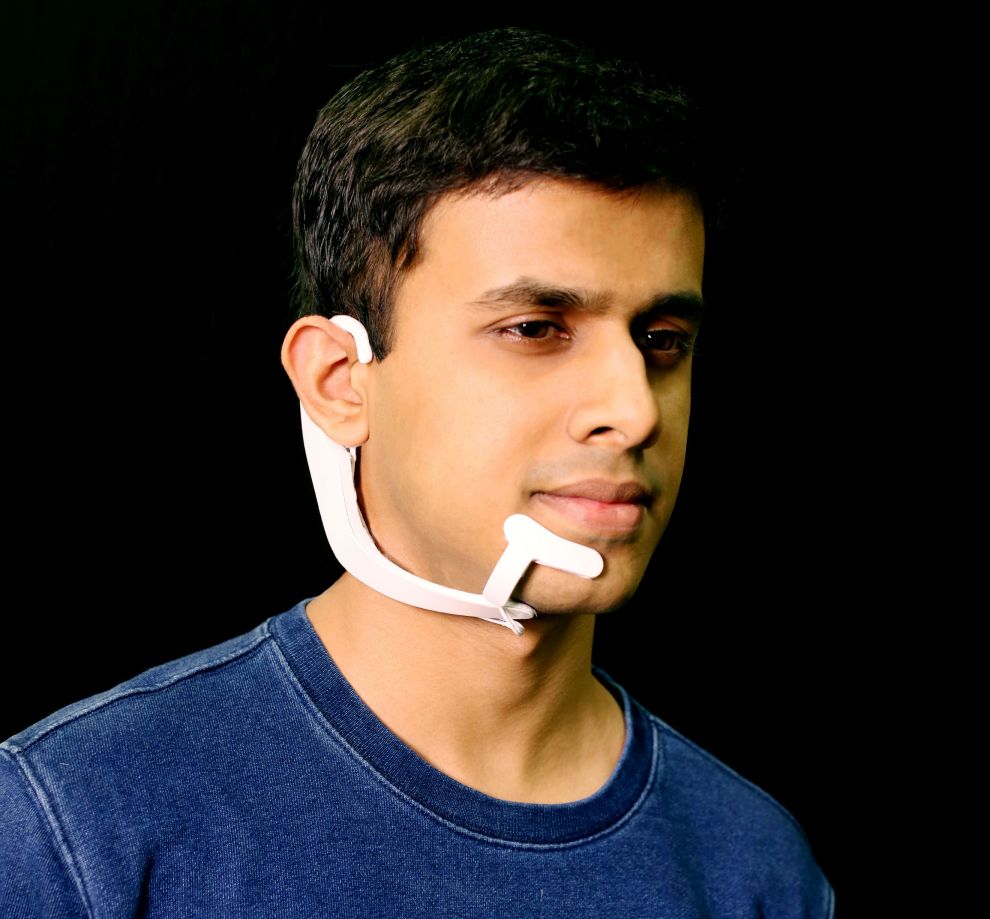If you thought it was scary when Big Brother was watching, imagine how freaky it’s going to be—or maybe already is—when Alexa, Watson and their futuristic wearable technology cousins who are still in development are able to analyze your mood or determine your overall health.
One neuroscientist believes we’re not far from the day when our devices—or those installed all around us—will start gathering unprecedented levels of information about us.
Our bodies, said Dolby Labs chief scientist Poppy Crum, give off various signals that can be scanned and analyzed by advanced computer systems. (Editor’s note: I’m not freaked out. You’re freaked out.) [related]
In a similar way to wearable gadgets already available, future devices could be set up throughout public spaces to harvest this valuable bio-data, Crum said during a recent presentation.
Here’s the kicker: because they’re part of our surrounding environment, there will be no way for us to opt out or ditch the monitoring technology and new regulations will be needed.
Using thermal imaging cameras, “mind-reading” electroencephalogram (EEG) caps, heart rate monitors and skin response sensors, Crum can watch how volunteers’ bodies and minds respond to what they watch on screen.
“We like to believe we have cognitive control over what someone else knows, sees, understands about our own internal states – our emotions, insecurities, bluffs or trials and tribulations,” said Crum in her recent Ted 2018 keynote in Vancouver.
“But wearable technology can already distinguish a real smile from a fake one. The dynamics of our thermal signature give away changes in how hard our brains are working, how engaged or excited we might be in the conversation we are having, and even whether we’re reacting to an image of fire as if it were real.”
EEG wearable technology has been used, among other applications, to create a machine that can decipher words from brainwaves without them being spoken to a headband design that would let computer users open apps using the power of thought.
“Your devices will know more about you than you will,” said Crum. “I believe we need to think about how [this data] could be used.”
Mind-Reading Headset
If you’ve made it this far without an anxiety attack, maybe this will send you over the edge: a team at MIT has been working on a headset that can read your mind. AlterEgo is a head-mounted — or, more properly, jaw-mounted — device that’s capable of reading neuromuscular signals through built-in electrodes.
“The motivation for this was to build an IA device — an intelligence-augmentation device,” grad student Arnav Kapur said in a press release.
“Our idea was: Could we have a computing platform that’s more internal, that melds human and machine in some ways and that feels like an internal extension of our own cognition?”
The MIT research team says it was able to get around 92 percent accuracy for commands from 10 people. The team also added bone conduction for audio playback to keep the system fully silent, an element that could potentially make it useful for special ops.
But wait! There’s more wearable technology!
There could soon be an app to identify a piece of music based on nothing more than your thought patterns.
In 2014, researcher Brian Pasley and University of California at Berkeley colleagues used a deep-learning algorithm and brain activity, measured with electrodes, to turn a person’s thoughts into digitally synthesized speech.
This was achieved by analyzing a person’s brain waves while they were speaking in order to decode the link between speech and brain activity.
The team has now improved on that earlier research and applied their findings to music. They were able to predict what sounds a pianist is thinking of based on brain activity 50 percent more accurately than in the original research.
The team recorded a pianist’s brain activity when he played music on an electric keyboard. By doing this, they were able to match up both the brain patterns and the notes played.
They then performed the experiment again, but turning off the sound of the keyboard and asking the musician to imagine the notes as he played them. This training allowed them to create their music-predicting algorithm.
“The long-term goal of our research is to develop algorithms for a speech prosthetic device to restore communication in paralyzed individuals who are unable to speak,” Pasley said.
“We are quite far from realizing that goal, but this study represents an important step forward. It demonstrates that the neural signal during auditory imagery is sufficiently robust and precise for use in machine learning algorithms that can predict acoustic signals from measured brain activity.”
Early Cancer Detection
Before you head to your bedroom and hide under the covers forever, here’s one more device that is a combination of intrusive and perhaps life-saving: scientists have developed an implant which detects cancer in the body and causes a small artificial mole to appear on the skin as an early warning sign.
The tiny patch lies under the skin and is made of a network of cells which constantly monitor calcium levels in the body. Cancer causes calcium to rocket in the body, and when too much is detected, the implant triggers the production of melanin – the body’s tanning pigment – which causes a small dark mole to appear.
Swiss scientists from the university ETH Zurich say the device “can recognize the four most common types of cancer – prostate, lung, colon and breast cancer – at a very early stage of tumor development.”
Martin Fussenegger, professor at the Department of Biosystems Science and Engineering at ETH Zurich, said the implant could be available within a decade.
“Nowadays, people generally go to the doctor only when the tumor begins to cause problems,” he said. “Unfortunately, by that point it is often too late. Early detection increases the chance of survival significantly.”
The “mole” appears long before the cancer becomes detectable through conventional diagnosis as an early warning system which tells people it is time to seek treatment.
“The idea that wearable technology could one day act as a warning sign for cancer is exciting, but it’s early days for this research,” said Dr. Catherine Pickworth from Cancer Research UK.
“Spotting cancer early is one of the most powerful ways of improving survival, so finding the best way to monitor people at high risk, or those in remission, is an important challenge.”
OK, I can breathe again. Does anyone have a paper bag?





